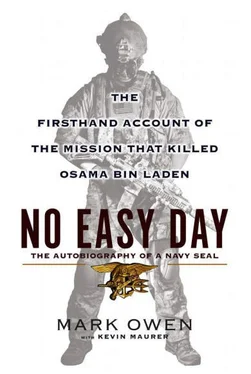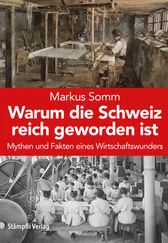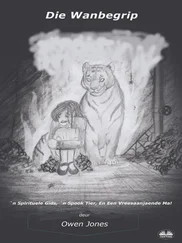But some of the gear, like a Gerber tool, came in handy on most missions. Back at SEAL Team Five, you were issued one Gerber tool, which had a knife blade, screwdriver, scissors, and can opener.
You were also issued only one scope for your rifle.
One fixed blade knife.
One set of ballistic plates.
That meant sorting through multiple bags to find the single item that you needed to transfer to a new bag containing the specialty gear for a given mission. It was a hassle and was not very efficient, but it was the U.S. government and I’d gotten used to it.
But it was different at DEVGRU.
My team leader came by my cage later that day to double check how I was doing and saw my load-outs in the color-coded bags. Off to the side, I had an extra bag with the gear I thought I’d need for most missions, including a Gerber tool.
“Go down to supply and get a Gerber for each bag,” my team leader said.
I looked at him confused.
“I can go get four of them?”
“Yeah, you got four different mission load-out bags. You need one Gerber for each bag,” he said.
My team leader signed my request form and I walked down to the supply office. One of the support guys met me at the window.
“What do you need?”
I showed him the list. It was basic stuff like flashlights and other tools, but I wanted four of each.
“OK,” he said without hesitation. “Be right back.”
In a few minutes, he came back with a plastic bin full of everything on the list. I had to fight to keep from smiling too much. This was a dream come true. Back at our previous teams, guys spent thousands of their own dollars buying kit we needed for work.
The armory was even better. Above the door was a sign: “You dream, we build.”
For a gun geek like me, it was heaven. I had them set up my two M4 assault rifles, one with a fourteen-inch barrel and one with a ten-inch barrel. I got an MP7 submachine gun and a collection of handguns, including the standard-issue Navy SEAL Sig Sauer P226. My primary weapon that I used daily was a suppressed Heckler & Koch (H&K) 416 with the ten-inch barrel and an EOTech optical red dot sight with a 3X magnifier. My H&K 416 with a fourteen-inch barrel I set up for long-range shooting. It was also suppressed, and on top I mounted a 2.5X10 Nightforce scope.
I also set up my fourteen-inch H&K 416 with an infrared laser and a clip-on thermal sight that allowed for more precise night shooting. I didn’t use the gun much because my primary weapon, with the ten-inch barrel, worked for most missions, but it was nice to have a gun ready with a little more range if I needed it.
I ran with a suppressed MP7 submachine gun on a few missions, but it lacked the knockdown power of my H&K 416. The submachine gun came in handy during ship boarding, in the jungle, or when weight, size, and the ability to stay extremely quiet were needed. Several times we shot fighters in one room with a suppressed MP7 and their comrades next door didn’t wake up. The H&K 416s didn’t compare to the MP7 when you were trying to be extremely quiet.
Rounding out my guns were two pistols—the Sig Sauer P226 and an H&K 45C. Both were suppressor capable and I typically carried the 45. I also carried an M79 grenade launcher, which was called a pirate gun because it looked like a blunderbuss. Our armorers cut the barrel short and modified the stock into a pistol grip.
Of course, none of my guns were standard issue. We all had individual modifications on the trigger and grips. I know for a fact the armorers took great pride in taking care of the tools that took care of us. Without a doubt, DEVGRU had the best tools in the business.
As you walked around the command, it wasn’t uncommon to hear rounds being shot at the indoor and outdoor ranges, or hear the thud of a breaching charge going off in the kill house. Training was constant. It wasn’t unusual to see guys walking between training events dressed in full kit, with their loaded weapon slung in front of them. Everything was geared toward war-fighting or training for it.
______
I was just getting the hang of things at the squadron in 2005 when I found myself on a plane headed overseas to Afghanistan. At the time, our unit was focused on Afghanistan, and the Army’s Delta Force was in Iraq.
Delta hit a rough patch that year and had taken several casualties in a short time. They requested additional assaulters, and DEVGRU rogered up and my team was selected to go. My squadron didn’t want my first deployment to be with Delta, so I spent some time acting as a floater working with my troop in Afghanistan. Given Delta’s needs, I eventually left Afghanistan with two other SEALs and headed to Iraq to help out.
We got into Baghdad well after midnight. The ride from the helicopter pad was dark as we weaved through the deserted streets of the Green Zone. It was summer and the humidity hung like a blanket over everything. Sitting in the bed of a pickup truck with our gear, the breeze felt good. Everything felt and smelled the same as my first combat deployment to Baghdad with Team Five in 2003.
We had arrived just after the invasion started. Our first mission was to secure the Mukatayin hydroelectric dam northeast of the Iraqi capital. Our chain of command was afraid retreating Iraqi forces might destroy the dam to slow the American advance.
The plan was simple. Based on our experience, which was zero, we planned to fly to the X, which is a tactic that means we insert directly onto the target, keeping speed and surprise in our favor. In this case the X was the dam, and once over the target in a helicopter, we planned to fast-rope into the courtyard. From there, we’d rush the main building and clear and secure it. Nearby, the GROM, Poland’s special operations unit, would clear another cluster of buildings while another group of SEALs would secure the outer perimeter using two dune buggies.
After a few days of waiting for the weather to clear up, we got the word to go. Climbing into the MH-53, I could feel my heart beating quickly. I’d been waiting for this moment since I was a kid reading about ambushes in the Mekong Delta.
I was about to launch on my first real combat operation. I’d thought about it, read about it, and now here I was about to do it for real.
I probably should have been scared, or at least concerned about the unknown, but it felt good to finally do it for real. I didn’t just want to practice the game, I wanted to actually play in the game, and this was going to be my first taste.
The flight took several hours and included a midair-refueling linkup. My team of twenty guys was crammed tightly inside the helicopter. The fuel smell wafted into the cabin as the helicopter filled its tanks using the boom in front of the cockpit. It was pitch-black inside the cabin, and I zoned out for most of the flight until we got the signal to get ready.
“Two minutes,” the crew chief screamed, signaling with his hands and turning on a red light. It was well after midnight as the helicopter approached the dam.
I took my position at the door and grabbed the rope. I couldn’t hear anything over the roar of the engines. Like the rest of my teammates, I was loaded down with breaching gear and our chemical protective suits. The “good idea fairy”—which is what we called the tendency for planners to add their two cents about every possible contingency, weighing the team down with options and extra gear and “good” ideas—had struck often on this mission. We were loaded down with quickie saws to break open the dam’s gates. We had to carry food and water for a few days. We didn’t know how long we’d be there, so we needed to be self-sufficient. The rule is, “When in doubt, load it out.” Of course the more you carry, the greater a toll it takes on your body, the slower you move, the harder it is to react quickly to a threat.
Читать дальше












